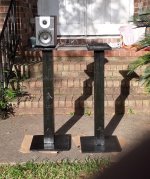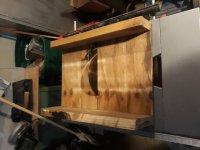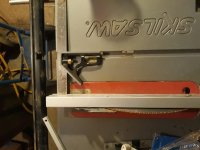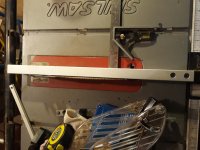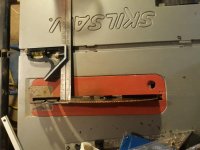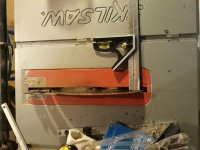The blade seems to be fine.....
Like I said, it cuts like butter for the first foot or so. Then it binds up, and if I continue it starts to smoke. I'm very new at this. It's something I should have learned long ago. But I'm having a ball making stuff I can use.
Here are some near-field monitor stands that I just made. They are designed to be sonically neutral and at a precise height to put the speakers right at ear height for mixing recorded music. I was very careful, but still some boo boos crept in. I was glad to work all day in the garage to get out of the mess with our 'house guests' and their animals. (Four big dogs, 2 cats and 9 puppies. Thank goodness the puppies are gettng homes)
PS: I don't like the gloss black, gonna get some satin finish paint.
Don't use Dull blades, they will smoke while forcing a cut.
Do not let the teeth of the blade "Pull" the wood into the cut.
Use the correct style blade and teeth number for the wood and cut to be made.
Good luck.
Like I said, it cuts like butter for the first foot or so. Then it binds up, and if I continue it starts to smoke. I'm very new at this. It's something I should have learned long ago. But I'm having a ball making stuff I can use.
Here are some near-field monitor stands that I just made. They are designed to be sonically neutral and at a precise height to put the speakers right at ear height for mixing recorded music. I was very careful, but still some boo boos crept in. I was glad to work all day in the garage to get out of the mess with our 'house guests' and their animals. (Four big dogs, 2 cats and 9 puppies. Thank goodness the puppies are gettng homes)
PS: I don't like the gloss black, gonna get some satin finish paint.
Attachments
Last edited:

